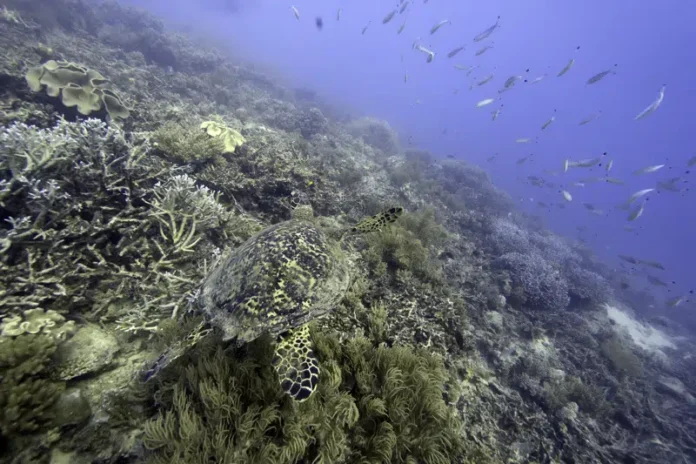WASHINGTON (AP) – For the first time, members of the United Nations have agreed to a unified convention to protect the biodiversity of the high seas.
The United Nations Convention on the Law of the Sea came into force in 1994, before marine biodiversity was a well-established concept. The contract agreement ended his two-week consultation in New York.
A modern framework for protecting marine life in the transboundary waters known as the high seas has been under discussion for more than two decades, but previous efforts to reach agreement have repeatedly stalled. A unity pact covering nearly half of the world’s surface was reached late Saturday. “We have only two major global commons, the atmosphere and the oceans,” says Rebecca Helm, a marine biologist in Georgetown. Protecting this half of the world is absolutely critical to the health of our planet.”
Nicola Clarke, a marine expert at the Pew Charitable Trust, observed the meeting in New York and called the long-awaited treaty text “a unique opportunity to protect the oceans – a big win for biodiversity.”
The treaty creates a new body to manage the protection of marine life and establish marine protected areas on the high seas. Mr Clark said this was important in order to meet the United Nations Biodiversity Conference’s recent pledge to protect his 30% of the earth’s water bodies and to protect his country.
Contract negotiations were originally scheduled to end on Friday, but were extended overnight until Saturday. The drafting of the sometimes endangered agreement is a “historic and overwhelming success for international ocean protection,” said Federal Environment Minister Steffi Lemke. “For the first time, we have a binding agreement on the high seas, which has been largely unprotected,” Lemke said. “More than 40% of the Earth’s surface is finally under comprehensive protection for endangered species and habitats.”
The agreement also establishes ground rules for conducting environmental impact assessments of commercial activities at sea.
“This means that not all planned activities on the high seas will be fully evaluated, but must be reviewed,” said Jessica Battle, an ocean policy expert at the World Wildlife Fund.
Several marine species, including dolphins, whales, sea turtles and many fish, make long migrations each year across national borders and high seas. Human communities that depend on fishing and marine-related tourism, along with efforts to protect them, have long proven difficult for international governing bodies. “This treaty will help bring together different regional treaties to address threats and concerns across the range of species,” Battle said.
Its protection will also benefit coastal biodiversity and economies, said Gladys Martinez de Lemos, executive director of the nonprofit American Environmental Defense Association, which focuses on environmental issues across Latin America.
“Governments have taken important steps to strengthen the legal protection of her two-thirds of the ocean, thus enhancing marine biodiversity and the livelihoods of coastal communities,” she said.
The question is how well the ambitious deal will be executed.
Official approval has yet to come, and many conservationists and environmental groups have pledged to keep a close eye on the plan. The high seas have long been plagued by exploitation from commercial fishing and mining, and pollution from chemicals and plastics. Malin Pinsky, a biologist at Rutgers University, said the new agreement “recognises that the ocean is not an infinite resource and that sustainable use of the ocean requires global cooperation.
Sunday, May 5, 2024
More
© London Post, All Rights Reserved by Independent Media Group UK Limited.






